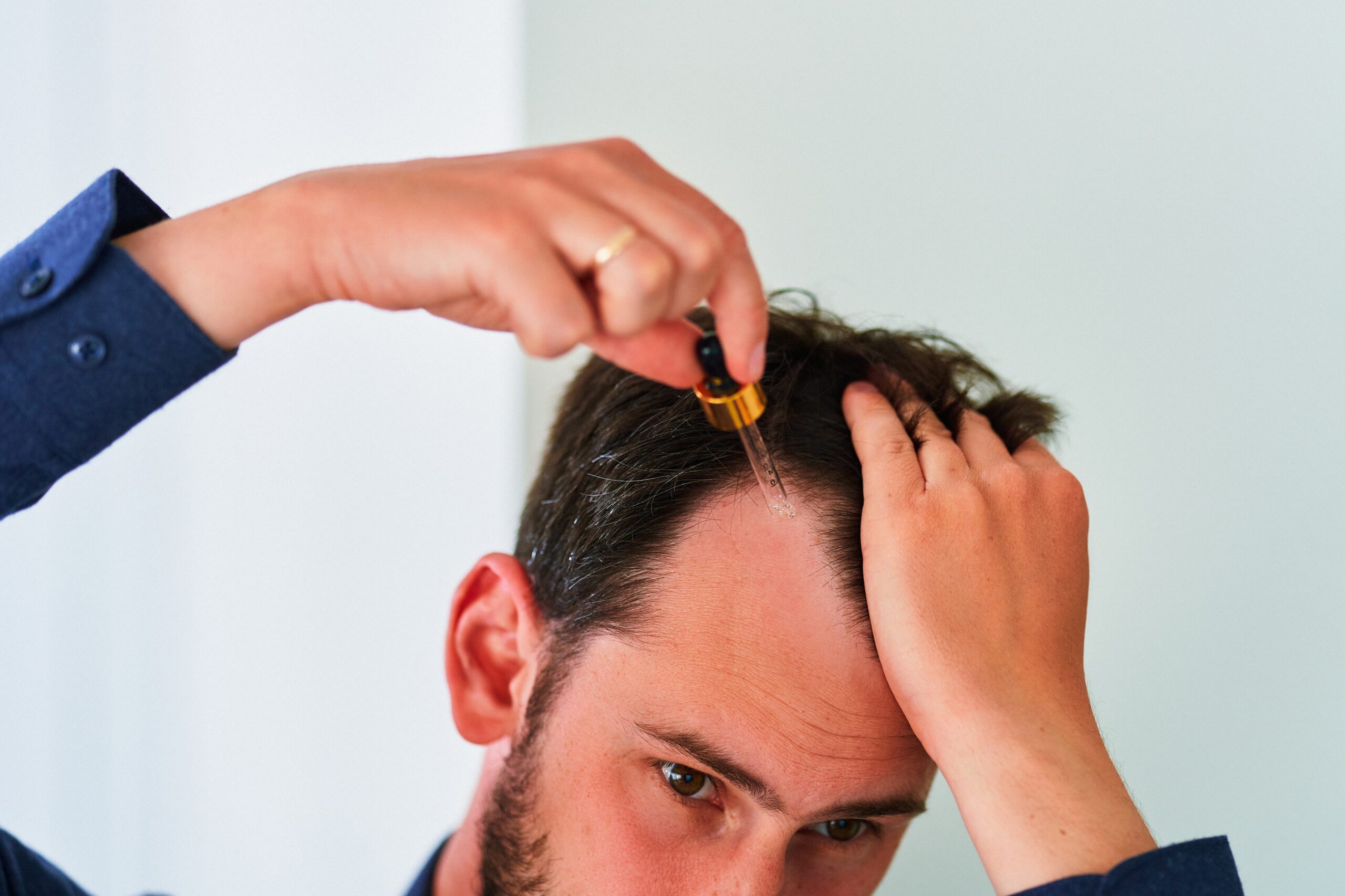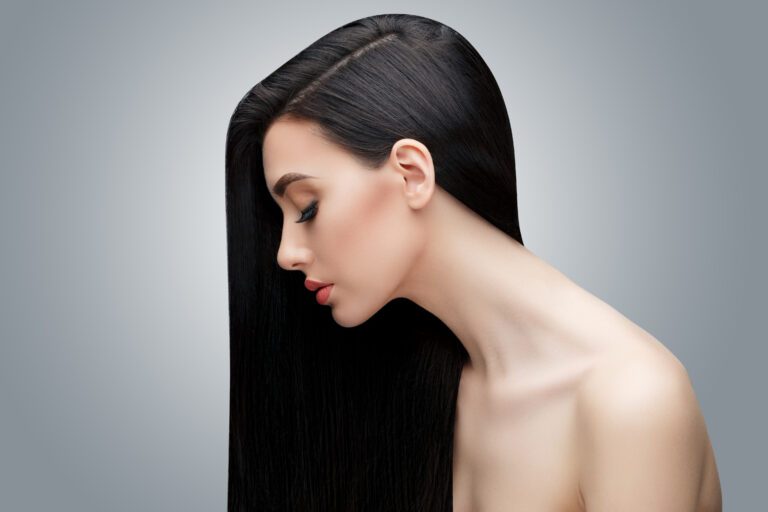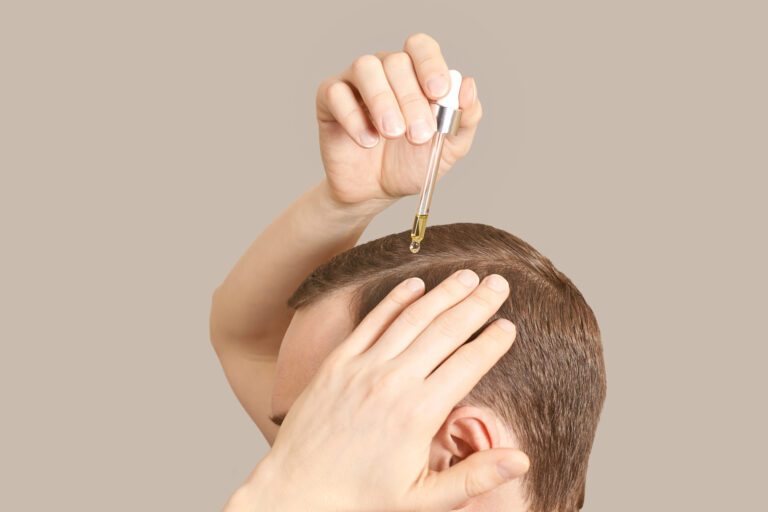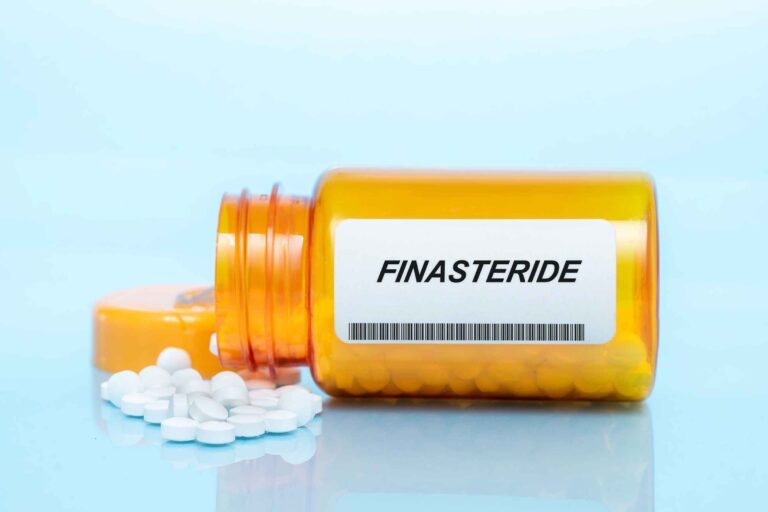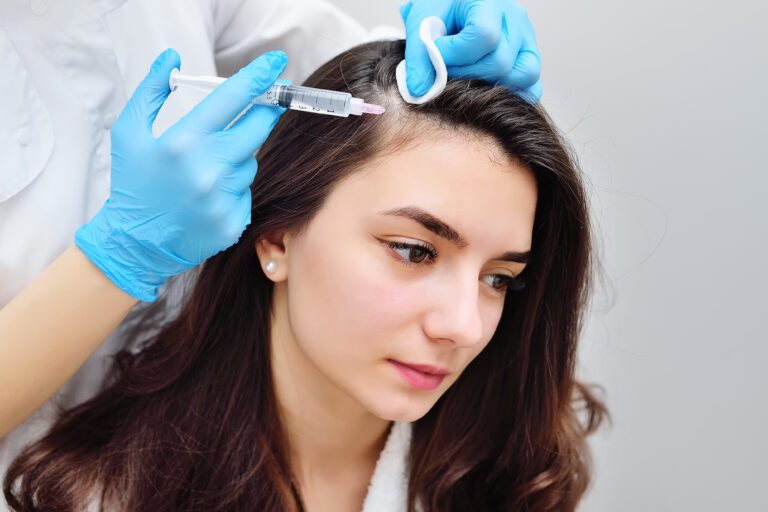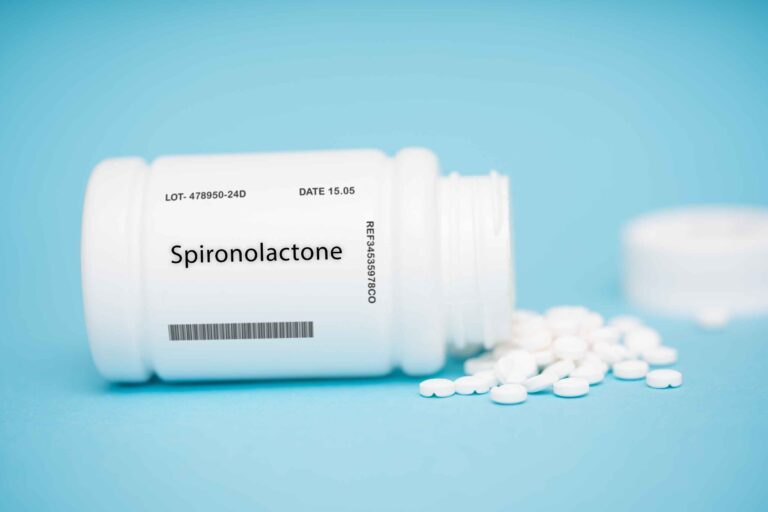Topical Finasteride: Does It Work and How It Compares to Oral Tablets?
Topical finasteride has grown in popularity since its introduction in 1997. While the battle for effective hair loss treatments for men suffering from male pattern baldness is ongoing, the solution shows promising results.
Now, the question is, does topical finasteride work, and how does it compare to oral tablets? As much as we’d like to say it works just as well as its placebo version, there’s more to it than just that.
The only way to determine its efficacy and risks is by gathering all the data available and comparing the results. On that note, let’s dig deeper into the ins and outs of the famed topical finasteride.
What Is Topical Finasteride?
Finasteride is a common orally-taken drug approved by the FDA for benign prostatic hyperplasia (enlarged prostate) in 1992 and androgenetic alopecia (male pattern baldness) in 1998. Its role in the body is to restrain 5-alpha reductase activity, the enzyme responsible for turning testosterone into dihydrotestosterone (DHT).
The first instance of the topical version of finasteride was studied and introduced in 1997 by a researcher, Mazarella. Since then, the solution has been making big waves in the medical field due to its efficacy with little to no systemic side effects.
However, as of today, topical finasteride is still yet to be approved by the FDA for male pattern baldness. Nonetheless, it’s still a viable option for males and females suffering from various types of hair loss.
Two Types of Topical Finasteride
Unlike the oral version, topical finasteride focuses on localizing the effects of blocking DHT on the scalp through the hair follicles. While this doesn’t guarantee a 100% systemic risk-free treatment, the chances of such effects are significantly reduced.
Currently, there are two types of topical finasteride, and they are as follows:
- Finasteride Spray Solution: is used by spraying directly on the affected areas and gently massaging them to stimulate the scalp.
- Finasteride Gel: is placed on either your fingers or a dropper to measure the amount before you massage the thinning areas on your scalp.
How to Use Topical Finasteride
While there are more steps involved when using topical finasteride, it won’t take too much effort compared to oral intake. However, you have to practice more consistency to ensure you’re applying the solution as often as needed.
Topical finasteride needs to be left on your scalp for absorption, so it’s best to shower before applying the solution. On average, you can expect your hair regrowth and density to improve within the first three to six months.
The more consistent you are at applying the solution paired with following a healthy lifestyle, the better the results will be. These are the steps you’ll need to apply topical finasteride properly on your scalp:
- Spray the solution directly on your scalp or use a medicine dropper if it’s in gel form. Ensure that you’re using the prescribed amount and that your hair is dry before doing so.
- Massage the solution to the thinning areas on your scalp to spread it evenly and stimulate the hair follicles.
- You can slightly tilt your head backward to avoid the solution from dripping down your face.
- Leave the solution on your scalp until it dries so your scalp can absorb the finasteride. Wash your hands thoroughly after.
- Repeat the steps once or twice a day, depending on the recommendation of your doctor or dermatologist. The best times to apply are first thing in the morning and before going to bed.
Topical Finasteride vs. Oral: What Are the Differences?
The main difference between topical and oral finasteride is the manner of intake or application. It’s also worth mentioning that this contrast creates a variation in the potential side effects.
Finasteride pills already have a prepared dosage, so you only need to take the corresponding amount daily as prescribed. On the other hand, the topical application requires a bit more consistency since it follows a specific procedure.
In terms of efficacy, both oral and topical finasteride show similar results in treating hair loss. As for the side effects, we’ll go further into detail as we discuss their pros and cons.
Topical Finasteride Pros and Cons
For many researchers and hair loss patients, topical finasteride seems to be the more favored treatment. It’s no surprise since it has a few desirable benefits that make it stand out compared to its oral version.
Here are some of the notable pros and cons of topical finasteride:
Pros
- Has decreased risk of systemic side effects (sexual-related symptoms, such as low sex drive, ejaculation problems, etc.)
- Localizes the treatment directly to the affected hair follicles
- Although it isn’t recommended, you can make your own topical finasteride solution
Cons
- Is a bit pricier than oral finasteride
- Isn’t FDA-approved
Oral Finasteride Pros and Cons
While it may seem like topical finasteride is the better option, we can’t deny that oral tablets have been reliable for a long time. The best way to note the differences between them is by comparing their advantages and disadvantages side-by-side.
Here’s to name a few of oral finasteride’s pros and cons:
Pros
- Doesn’t cause skin-related side effects (rashes, scalp irritation, contact dermatitis, etc.)
- Is FDA-approved
- Finasteride tablets are more affordable and accessible
Cons
- Has a few sexual-related systemic side effects
- Research suggests that oral finasteride can cause depressive symptoms
Does Topical Finasteride Go Systemic?
Topical finasteride is known to have less systemic absorption compared to oral tablets. This is because the topical application doesn’t have to go throughout the body, effectively minimizing other potential side effects.
However, it’s worth noting that topical finasteride can still go systemic if it’s used in excessive amounts. The best way to prevent this is by following your prescribed dosage and consulting if you need to add more for your hair loss condition.
What Are the Common and Uncommon Topical Finasteride Side Effects?
The topical use of finasteride has become popular and further studied over the past few years. However, since it still isn’t FDA-approved, we can safely assume that we’ve yet to achieve conclusive results about its overall efficacy and side effects.
As of now, these are the known side effects of topical finasteride:
- Irritation and burning sensation on the scalp
- Scalp pruritus
- Erythema
- Contact dermatitis
- Dandruff
Can You Take Topical Finasteride and Minoxidil Together?
Minoxidil and topical finasteride is a commonly recommended combination for treating more severe cases of hair loss. The good thing about them is they can actually work together instead of overlapping to achieve better results.
Topical finasteride’s role is blocking DHT, while minoxidil lengthens the anagen phase or hair growth cycle. However, combining the two isn’t something you should do on a whim since it needs more research.
Does Oral and Topical Finasteride Work on Women Too?
Even though the FDA hasn’t approved oral and topical finasteride for treating female pattern baldness, studies show these medications benefit them too. However, it’s worth noting that children and pregnant women shouldn’t use these treatments at all costs.
There are many studies to back the claim that finasteride is effective for women suffering from hair loss. However, nothing’s conclusive yet, and more research is needed to have these treatments recognized as FDA-approved medications for women.
What Are the Natural Alternatives to Topical Finasteride?
Finasteride, as with any other treatment drug, comes with a few potential adverse effects. These possible symptoms are related to the systemic intake of the medication.
Sadly, even if topical finasteride doesn’t go as systemic as its oral version, there’s still a slight risk of side effect occurrence. As such, it’s no surprise people often look for natural alternatives.
Luckily, scientists continue to research various treatments to combat hair loss. While not every study is conclusive, here are some natural topical finasteride alternatives worth mentioning:
Pumpkin Seed Oil
It’s been scientifically proven that pumpkin seed oil can block 5-alpha reductase, reducing the production of DHT. Studies also show that the oil exhibited antiandrogenic effects on rats. The results display a noticeable increase in hair regrowth for men suffering from androgenetic alopecia with little to no adverse effects.
However, there’s not much data to solidify the long-term effects and potential consequences of using pumpkin seed oil for hair loss. Nonetheless, researchers believe it can and should be considered a natural alternative for hair treatment.
Rosemary Oil
A 2015 study suggests that rosemary oil had the same hair-regrowth effect as minoxidil after applying it twice a day for six months. The essential oil showed promising results, but there’s more to uncover since the tests were done with a small and controlled group.
Rosemary oil works as a natural DHT blocker, hair regrowth stimulant, and hair loss prevention agent. However, it shouldn’t be used in excessive amounts and in the undiluted form to avoid risks of irritation, allergy reaction, vomiting, and other side effects.
Caffeine
As a little good news to all the coffee lovers out there, caffeine is said to be effective in promoting hair growth. While there’s not much evidence yet if it can act as a hair treatment substitute, it helps lengthen the growth of hair follicles.
For now, it might be best to use it in conjunction with FDA-approved treatments like minoxidil and oral finasteride. It can also be reliable for preventing hair loss during its early stages or before it occurs.
Green Tea
Similar to caffeine, there aren’t many conclusive studies yet to prove green tea’s efficacy as a natural health treatment solution. Nonetheless, it doesn’t hurt to try since green tea has a lot of health benefits with no risks involved.
One of the nutrients found in green tea is epigallocatechin-3 gallate (EGCG), which is believed to be a potential DHT blocker. However, it needs more research to confirm if it can inhibit 5-a reductase.
Saw Palmetto
Saw palmetto extract comes from the berries of the Serenoa repens tree. This traditional food supplement is commonly used for the following benefits:
- Improves urinary function
- Boosts fertility and libido
- Enhances hair regrowth
- Reduces inflammation
- Treats prostate enlargement
Saw palmetto is said to have DHT-blocking characteristics, although it still lacks more studies to back this claim. However, it’s worth noting that it improved hair growth for ⅓ of the men involved in a comparative study with finasteride in 2012.
Lycopene
While there’s not enough data to support lycopene as an effective alternative for stopping male pattern baldness, it has a few health benefits that enhance hair growth.
For starters, it’s a powerful antioxidant that removes free radicals (which can accelerate hair loss) in the body.
Lycopene is also a commonly used treatment for prostate problems. As such, it’s believed to help moderate DHT levels, which also play a vital role in hair loss progression.
Vitamin B12 and B6
Vitamin B12 and B6 aren’t necessarily hair loss treatment alternatives, especially if the concern is male pattern baldness. However, if your hair is thinning due to a deficiency in the mentioned vitamins, they can definitely help your condition.
Nonetheless, these vitamins help promote healthy hair, so they’re still effective as preventive measures against hair loss.
Biotin
Similar to vitamins B12 and B6, hair loss caused by biotin (vitamin H) deficiency is best remedied with natural foods and supplements rich in biotin. As far as male pattern baldness goes, there’s not enough research on whether or not this vitamin can help with such a condition.
However, it still stands that biotin helps maintain hair growth and reduce inflammation. With that said, it’s still worth a try if your doctor recommends it.
Alternative Treatments and Medication for Oral Finasteride
While oral finasteride is widely accepted and FDA-approved, its undesirable potential side effects worry its users. As a result, people look for other substitutes that might have similar benefits but with lesser risks.
Luckily, many available treatments are further being developed and researched. Here are some of the most recommended alternatives for treating and preventing hair loss:
Minoxidil (Rogaine)
Minoxidil, commonly known as Rogaine, is an FDA-approved solution for hair loss treatment in men and women. This medication has been around since 1986, and while it shows promising results, effects may vary per person.
Nonetheless, there’s no denying Rogaine helps improve the condition of those suffering from hereditary hair loss. You can get the solution or pills either by doctor’s prescription or over the counter.
Laser Caps or Helmet
Laser caps or helmets are a form of low-level laser treatment (LLLT) that prevents and potentially reverses hair loss. This method is approved by the FDA for both men and women experiencing hair thinning.
LLLT is thought to have hair-stimulating effects through sped-up cell division and anti-inflammatory properties for damaged cell reduction. It’s also considered one of the best hair treatment methods since it has no known side effects.
Platelet-Rich Plasma Treatment
Platelet-rich plasma is an effective alternative treatment for men and women suffering from hair loss. This medical procedure follows three steps, namely:
- The doctor or surgeon draws blood from the patient (likely from the arm).
- The drawn blood is transferred and processed into three layers: red blood cells, plasma-rich platelets, and platelet-poor plasma.
- The plasma-rich platelets will be injected into the scalp while the rest of the layers are thrown out.
While the treatment shows promising results, it’s not officially approved by the FDA for skin and hair procedures.
Procapil
Procapil is a fairly new treatment solution for androgenetic alopecia. This medication is derived from natural ingredients found in olive and citrus trees.
Compared to minoxidil and finasteride, procapil has no known side effects, but more research is needed to confirm its efficacy and long-term effects on male pattern baldness.
As such, the natural solution is yet to be approved by the FDA for treating hair loss. Be that as it may, it shows great promise and might potentially be a better alternative to minoxidil and finasteride.
Viviscal
Viviscal is a known brand that offers a variety of hair health-improving products, such as food supplements, serums, and shampoos. The brand’s main product is its hair growth supplement, which contains the following active ingredients:
- Biotin
- Marine collagen
- Iron
- Niacin
- Vitamin C
- Zinc
- Calcium
- Silica
- Horsetail extract
While Viviscal claims their product manufacturing conforms to the FDA’s standards, they’ve yet to receive approval.
However, researchers state their supplements have potential and little to no side effects. What the brand lacks is more data to back its claim on hair growth efficacy.
Hair Transplant
If you have the means in budget and donor area health, a hair transplant (FUT or FUE) is one of the most effective treatments for male and female pattern baldness.
However, the procedure is quite expensive and can take a while to produce results. Undergoing such a treatment requires extensive planning and discussion with a trusted surgeon to determine if you’ll be a fit candidate.
Wrapping Up
Thanks to decades of research and clinical trials, we’re slowly being introduced to various hair loss treatments, whether natural or chemical. It goes to show there’s not a single way of approaching medical conditions like male pattern baldness.
Luckily, topical finasteride and other potential alternatives are constantly being studied to determine their overall efficacy and potential risks. Only time and science can tell if these treatments are the answer to reversing hair loss issues.

